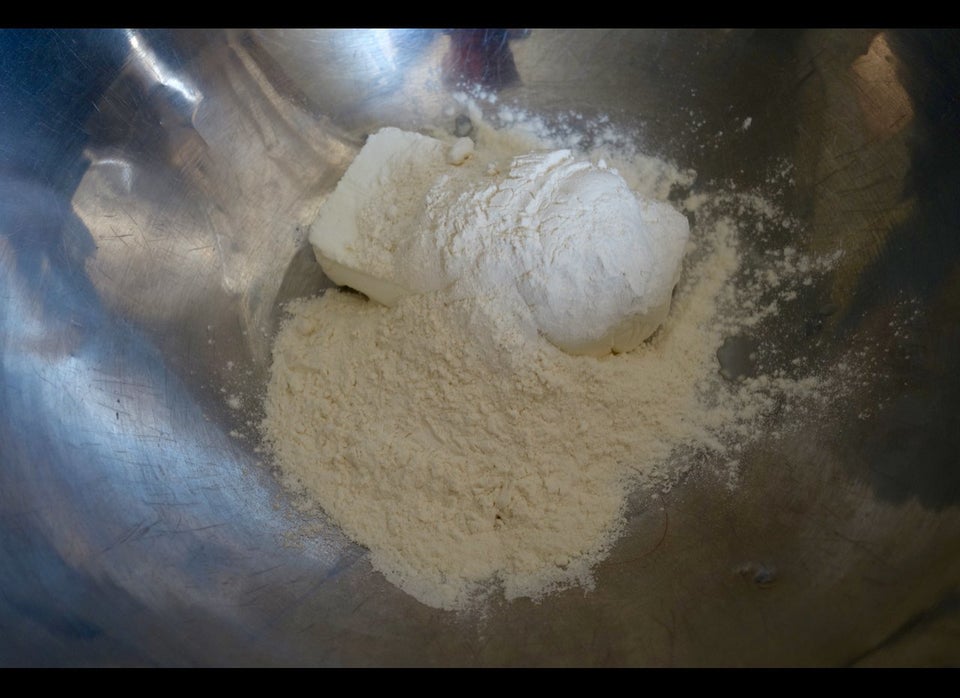Six years ago, Jackie came back from a visit to her friend in Warsaw with the recipe for one of the great simple dumplings: leniwe pierogi, or lazy pierogi. They're lazy (or the cook is) because, first, there's no filling, just dough (a delicious cheese-based one at that); and, secondly, because they take just a few minutes to make. They can be eaten by themselves with butter and optional fried breadcrumbs, as a dessert, with butter and sugar, or even as a side dish with braised meat - not traditional, but delicious. I wrote about them at the time, but since 2010 we've grown even lazier and when Jackie recently made them after another trip to Poland for inspiration, the recipe grew even simpler without any discernible harm to the result.
For two modest portions (or four as a side dish or dessert), Jackie began by putting up a big pot of lightly salted water to boil. Once that was under way, she used her fingers to break up a 7.5-ounce (210 g) package of farmer's cheese - which is very like the Polish twaróg that's normally used - in a bowl. If you live in a place where twaróg is sold, by all means buy half a pound (225 g) of that. She worked a generous 2/3 cup (100 g) of flour into the cheese, then added one whole egg, lightly kneading to combine thoroughly. The dough needs to be firm enough to form into ropes to be cut into gnocchi-like lumps, so work in a little more flour if you need to. Use this opportunity to check for salt; you may or may not find that the cheese has supplied enough.
She let the dough rest for five or ten minutes (it became easier to work), cut it into three or four pieces and, on a floured work surface, used both hands to roll each piece into a rope roughly 5/8 inch (1.5 cm) in diameter or a little thicker. She then cut the ropes into lengths of around 1 inch (2.5 cm), dusting with flour as needed to keep them from sticking together. Some cooks cut these at a sharp angle, some slightly on the bias, and some straight across. Anything goes.
She boiled them, gently, for five minutes in lightly salted water and tasted one to make sure it was done. It was, so, on one occasion, she used a skimmer to transfer the dumplings to a bowl of ice water to cool quickly. From there, she put them into a bowl and tossed to coat them with a teaspoonful of neutral oil. The bowl was then covered and put in the fridge until dinner time, when they were reheated in butter before being served along with veal cheeks in a goulash-like paprika sauce. (They could have gone right from the boiling water to a warmed serving bowl along with some butter.)
A week or two later, she browned a good handful of breadcrumbs in butter and transferred the freshly cooked and well drained dumplings directly into the skillet, tossed them to coat and served them on their own as a light, satisfying dinner.
The cheese, with its mild, lactic sourness, is the principal flavor, while the appealing chewiness comes from the flour. These are a delicious, quick meal for anyone, not just a lazybones.
